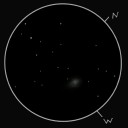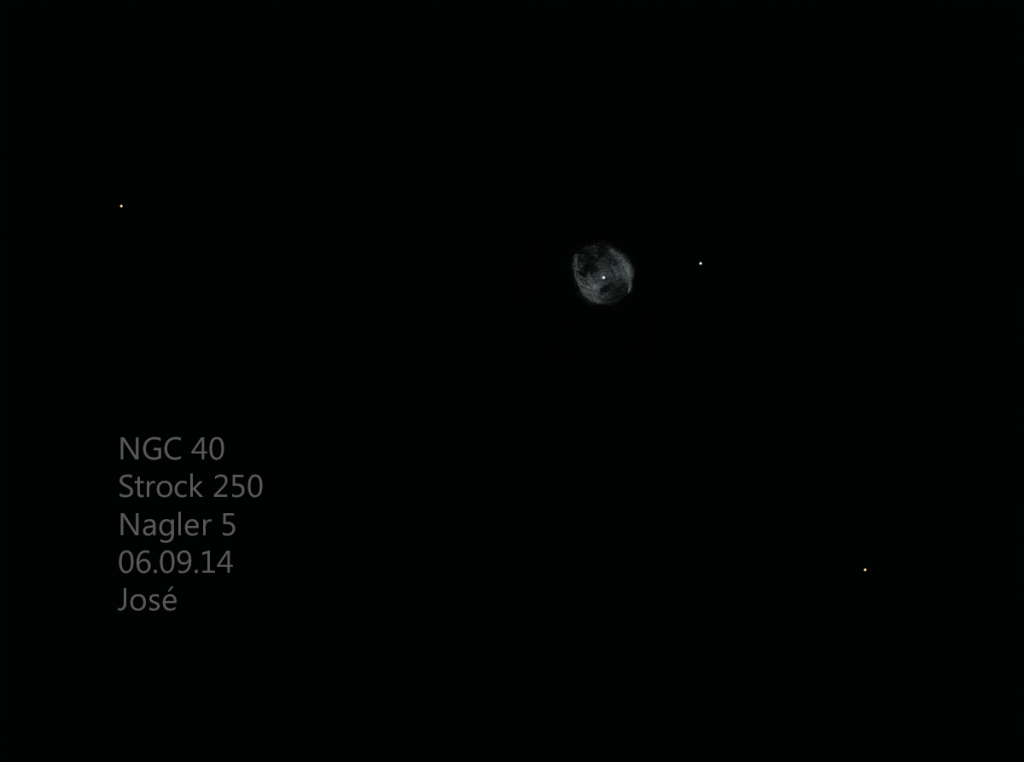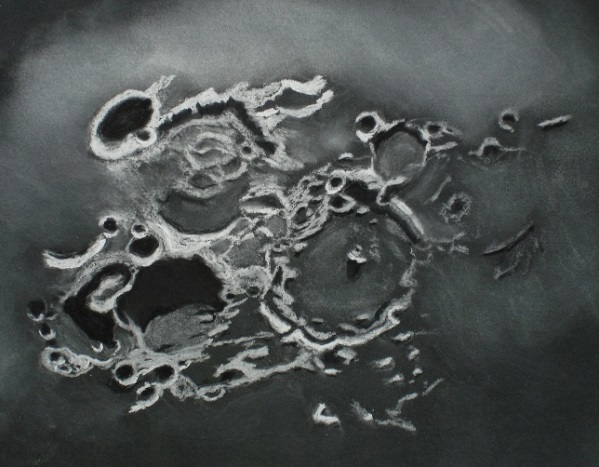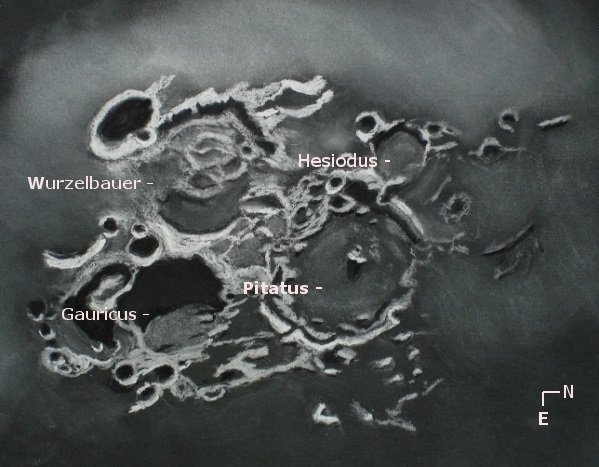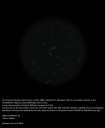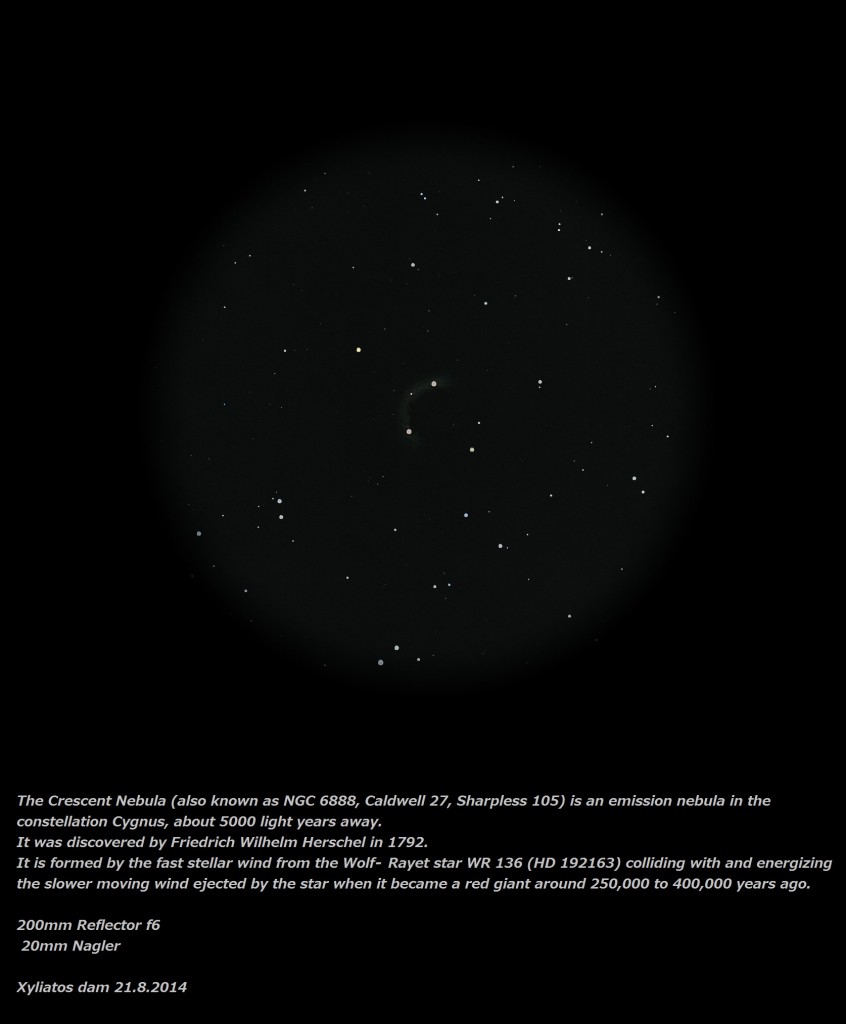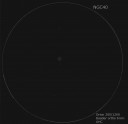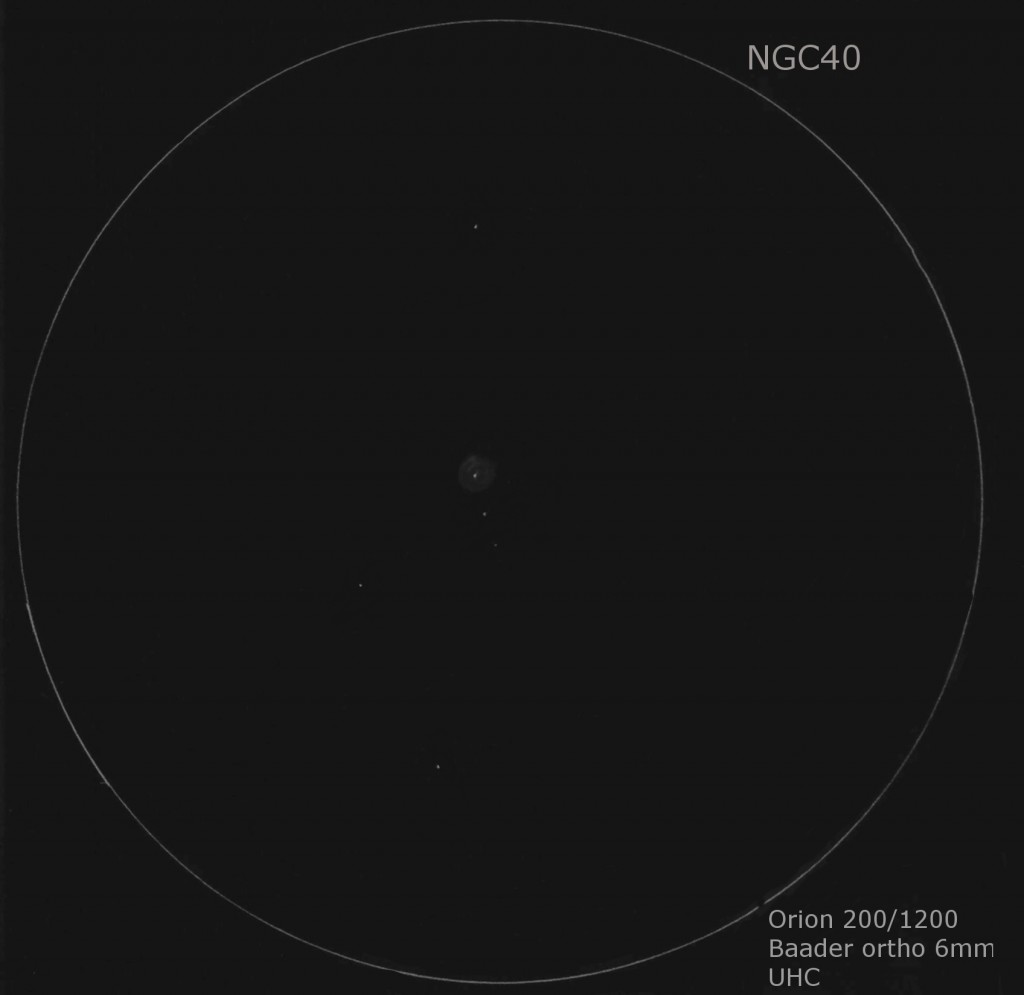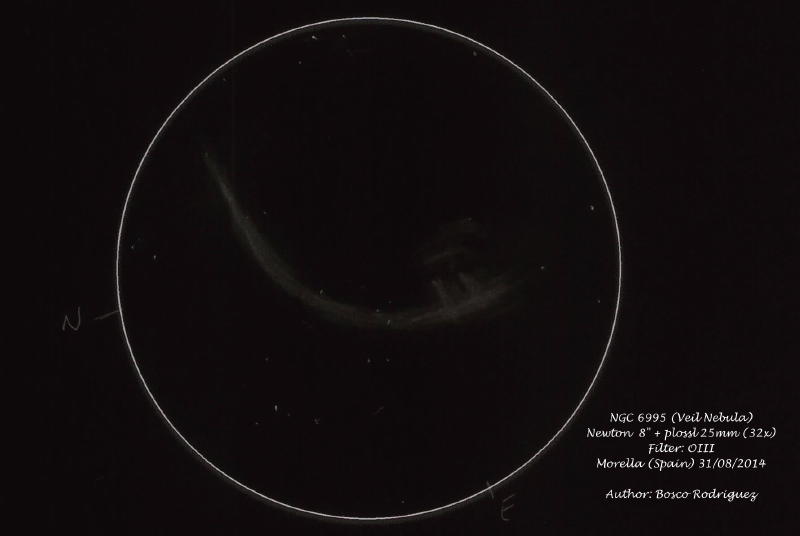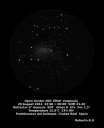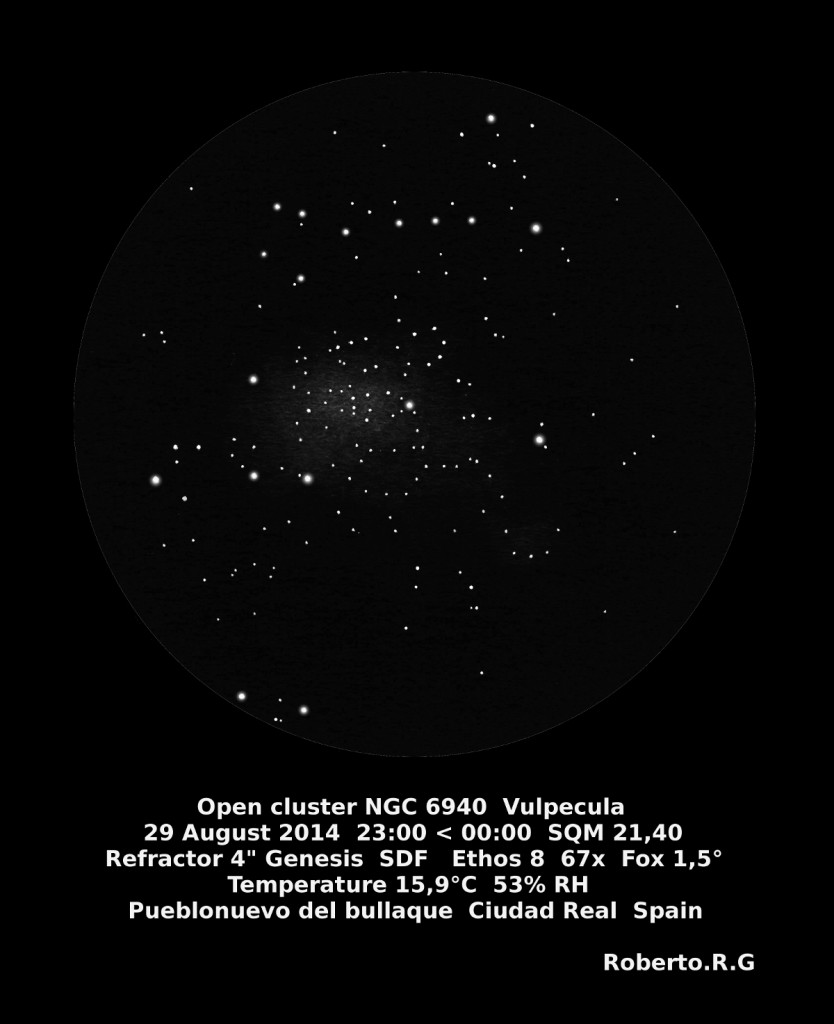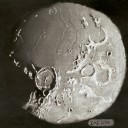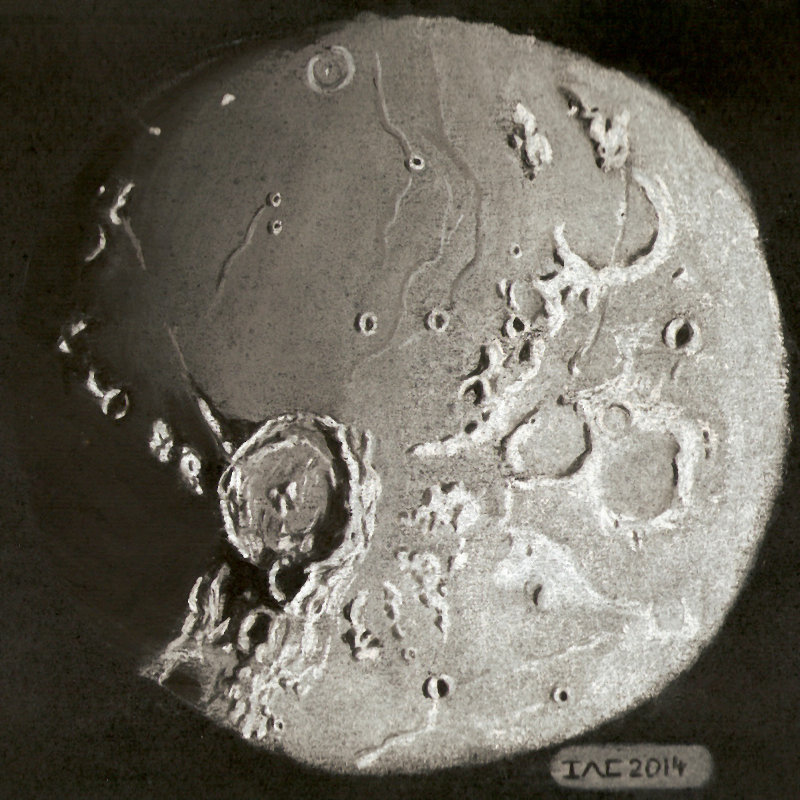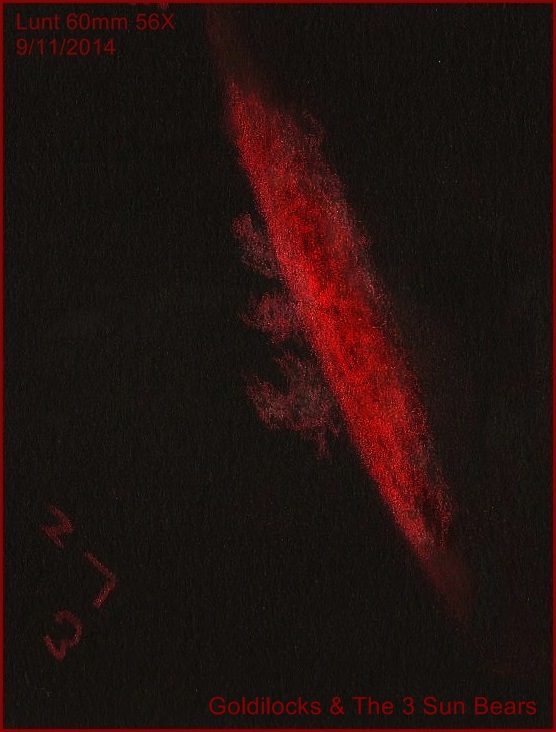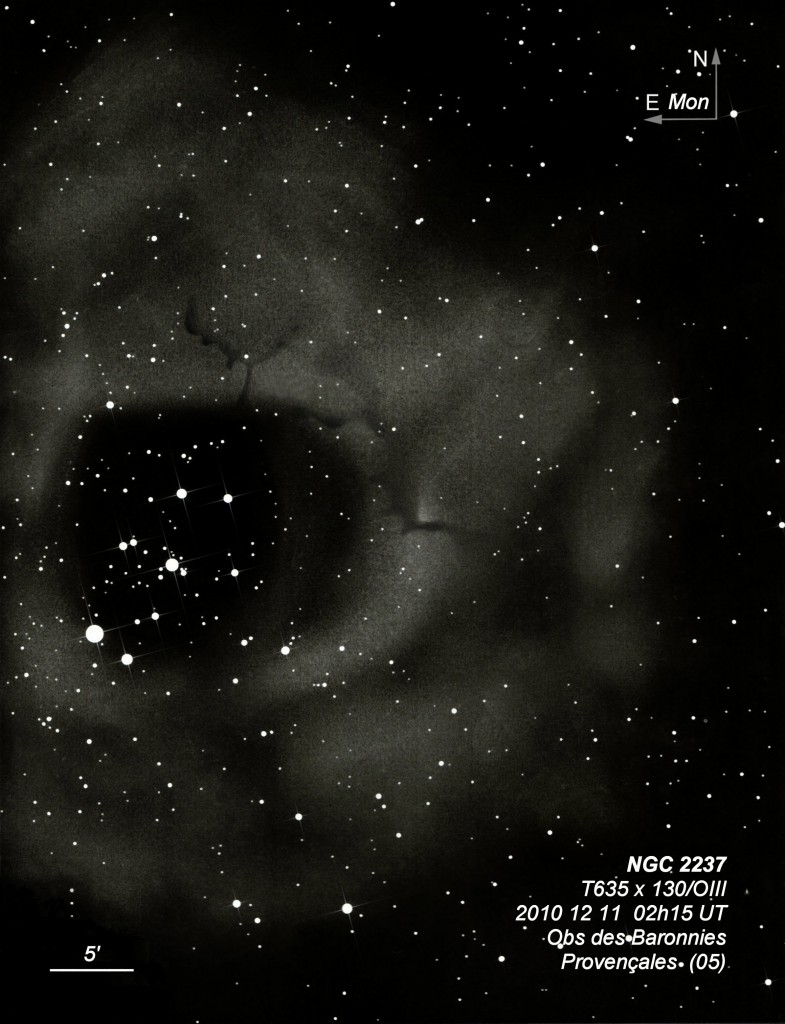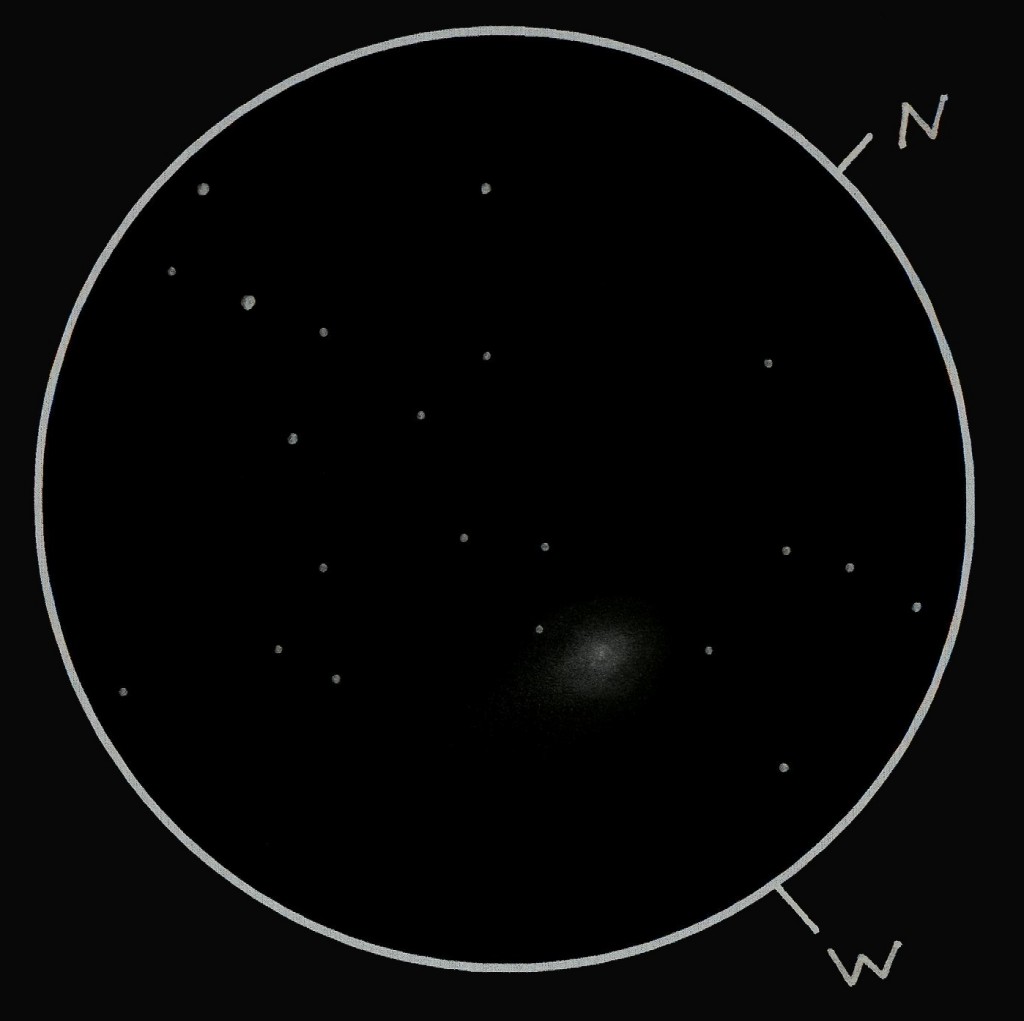
Object Name: C/2014 E2 (Jacques)
Object Type: Comet
Location: Stokesley, North Yorkshire
Date: 23 September 2014
Media: 4H, HB, 2B and 4B pencils, blending stumps, kneadable eraser on white paper, scanned then inverted and edited using Paint Shop Pro
Telescope: 130mm Newtonian reflector, 13mm Plössl (50x / 1 degree FOV), no filter
Time: 22.41 UT – 23.44 UT
Seeing: III-II (Antoniadi scale)
Transparency: Good, LM:5.22
Notes: The comet was in the constellation of Cassiopeia. It appeared slightly elongated but I could not see a tail. The coma appeared a light green colour.
Steve
